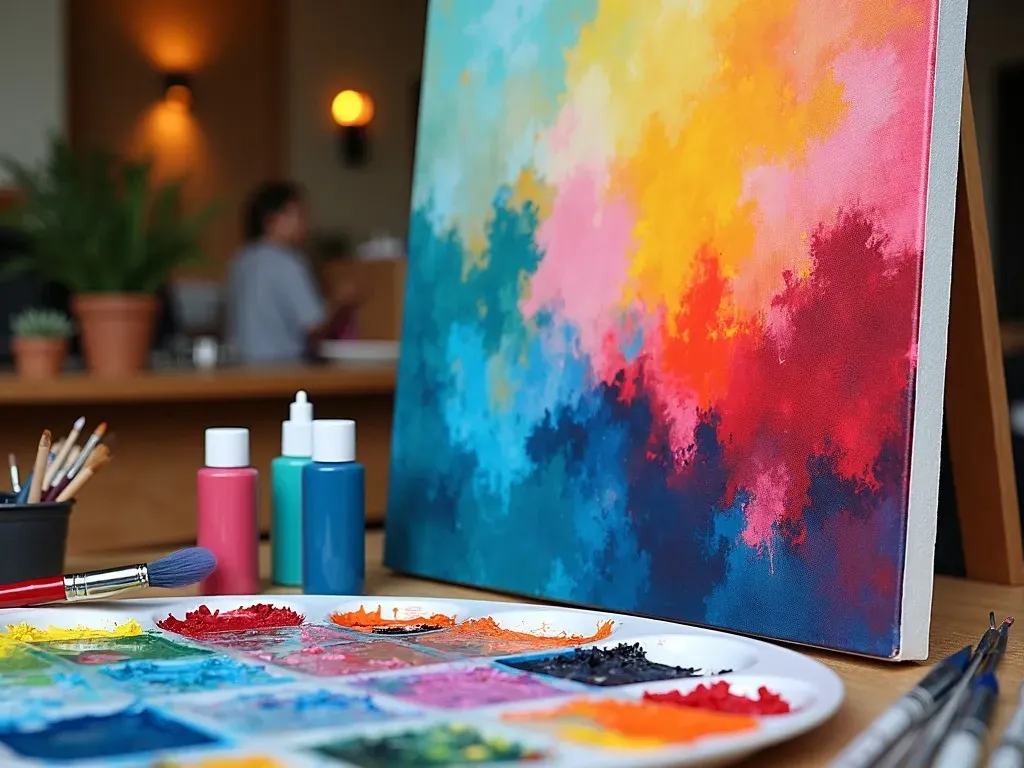Acrylic coloring, the art of using acrylic paint, has gained immense popularity among both novice and experienced artists due to its versatility, vibrant colors, and ease of use. This water-based paint medium dries quickly and can be manipulated in various ways to achieve incredible effects. With its unique properties, acrylic paint can be used for a range of Techniques, allowing artists to explore their creativity without feeling constrained.
Understanding Acrylic Paints
Acrylic paints come in different viscosities, allowing artists to choose the right type for their projects. The most common types are heavy body and fluid acrylics:
| Type of Acrylic | Description |
|---|---|
| Heavy Body | Thick, buttery consistency similar to oil paints; retains brush strokes and is ideal for impasto techniques |
| Fluid Acrylic | Thinner and more suitable for detail work, staining, watercolor techniques, and dry-brush techniques |
Whether you’re layering or glazing, understanding the differences in acrylic paint will help you make informed choices in your artwork.
Key acrylic painting techniques for Beginners
-
Color Mixing: Mastering color mixing is crucial in acrylic coloring. The primary colors—red, blue, and yellow—can be combined to create a full spectrum of hues. Mixing these colors can help you understand the tension between shades, tints, and tones.
-
Layering: One of the most striking aspects of acrylic coloring is the ability to layer paint to create depth. Always remember to work from dark to light. Apply a dark base layer first, letting it dry before adding lighter shades on top.
-
Glazing: This technique involves applying a transparent layer of paint over a dry base coat. Each layer adds complexity to the color and can create an illusion of depth.
-
Wet-on-Wet: This technique allows for seamless blending of colors. Apply wet acrylic paint on top of wet paint, which can lead to beautiful gradients and soft textures.
-
Dry Brush: This technique involves using a dry brush to apply a small amount of paint, creating a textured effect. It’s perfect for adding highlights to your artwork.
-
Sgraffito: This technique entails scratching into wet paint to reveal the color underneath. It’s an excellent method for creating intricate designs and patterns.
-
Spattering and Dripping: An exciting way to add spontaneity to your work. Dilute your acrylic paint with water and flick it onto the canvas for dynamic splatters.
Essential Tools for Acrylic Painting
To get started with acrylic coloring, you’ll need some essential tools:
- Canvas or Acrylic Paper: Choose a surface that suits your style—canvas, wood, or acrylic specialty papers.
- Brushes: Invest in a variety of brushes, including flat, round, and filbert shapes.
- Palette: A mixing surface for your paints. A disposable palette or a ceramic plate works well.
- Water Cup: For rinsing brushes and thinning your paints.
- Palette Knife: For mixing colors and applying paint in texture techniques.
The Color Wheel and Mixing Tips
Understanding the color wheel can drastically improve your ability to mix paints effectively. Here’s a simple breakdown of the color wheel:
| Primary Colors | Secondary Colors | Tertiary Colors |
|---|---|---|
| Red | Orange | Red-Orange |
| Blue | Green | Blue-Green |
| Yellow | Purple | Yellow-Orange |
Tips for Color Mixing
- Start with the primary colors: Creating secondary colors helps you grasp how hues blend together.
- Add white or black carefully: While white can lighten a color, use it sparingly to maintain vibrancy. Black can dull colors; consider using complementary colors to create darker shades instead.
Acrylic Painting Self-Teaching Resources
For anyone wishing to delve deeper into acrylic coloring, numerous online resources provide excellent guidance:
- Art is Fun: A comprehensive guide to understanding acrylic paint and its properties.
- Fine Art Tutorials: Offers a structured approach for beginners in acrylic painting with practical advice.
- Your Art Path: A list of essential colors and their uses for beginners.
Frequently Asked Questions (FAQ)
What is the best way to clean brushes after using acrylic paint?
Cleaning brushes promptly with soap and warm water is critical. If acrylic paint dries on the brush, it can be challenging to remove.
Can you mix acrylic paint with water?
Yes! Thinning acrylic paint with water can help achieve various techniques like watercolor effects. However, use too much water can affect the paint’s integrity.
How long does acrylic paint take to dry?
Acrylic paint typically dries in 15 minutes to an hour, depending on the thickness and environmental conditions.
Do I need any special canvases for acrylic painting?
While traditional canvas is ideal, you can also use paper, wood panels, or even fabric designed specifically for acrylics.
Elevating Your Acrylic Art
With practice, experimentation, and a solid grasp of techniques, anyone can master acrylic coloring. From its blendability to its vibrant palette, acrylic paints open doors to creative expression limited only by one’s imagination. Remember to embrace the learning process and enjoy your artistic journey.
Closing Thoughts
Mastering acrylic coloring is a rewarding pursuit—one that combines art, science, and an exploration of colors that only you can decide how to utilize. Explore freely, make mistakes, learn, and always remember that art is about self-expression. Enjoy the journey!
